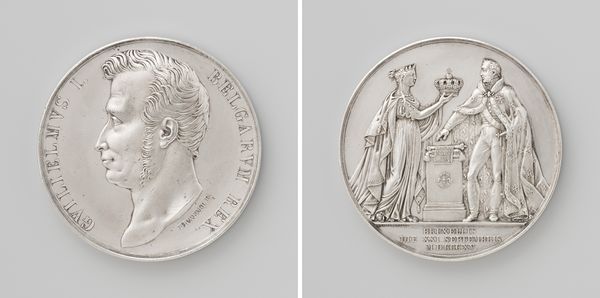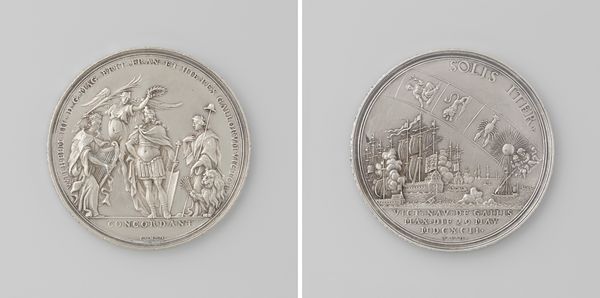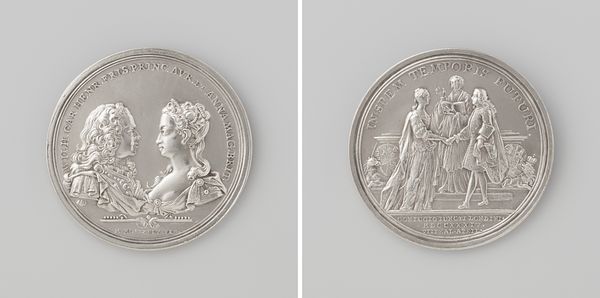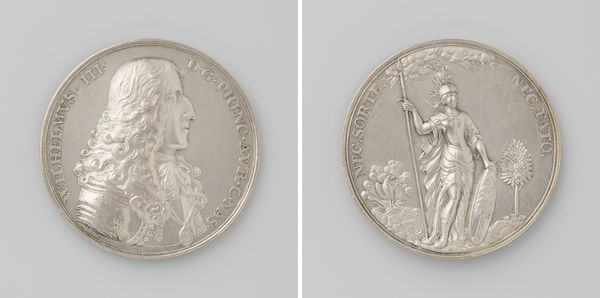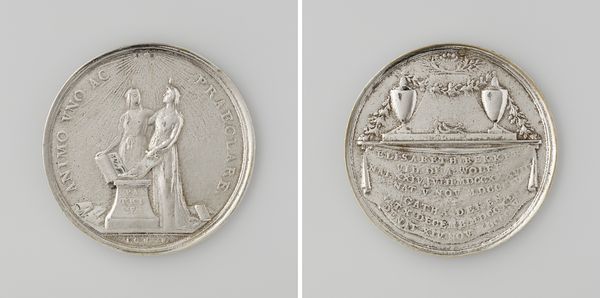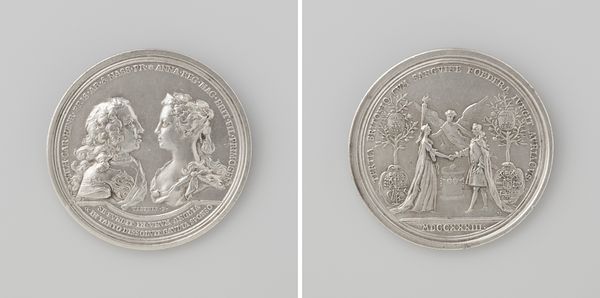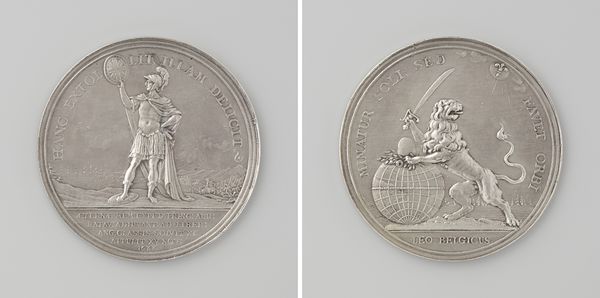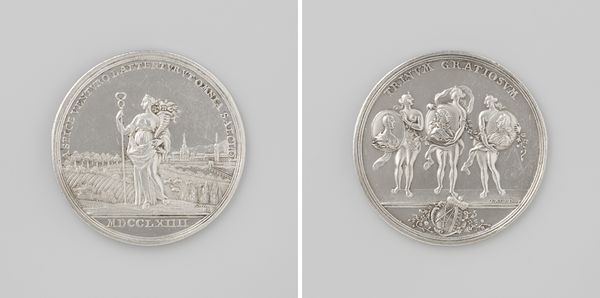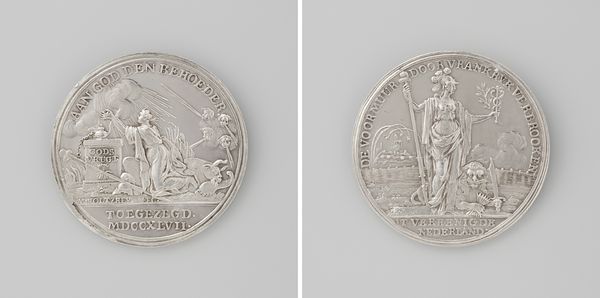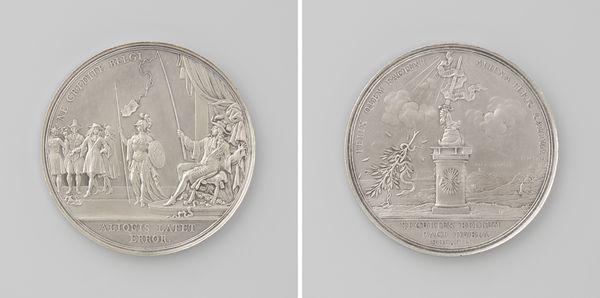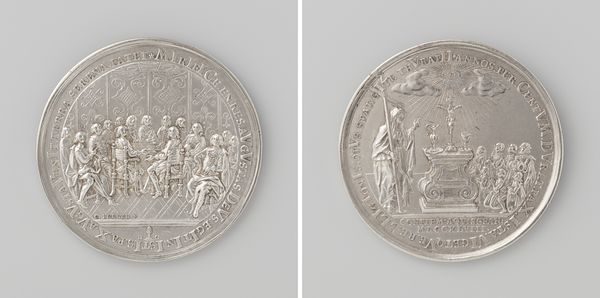
Teyler's Godgeleerd Genootschap, penning toegekend aan Jeronimo de Bosch, in 1784 of 1785 1778 - 1785
0:00
0:00
johangeorgeholtzhey
Rijksmuseum
metal, relief, engraving
#
historical design
#
neoclacissism
#
metal
#
relief
#
history-painting
#
engraving
Dimensions: thickness 0.7 cm, diameter 7.4 cm, weight 186.88 gr
Copyright: Rijks Museum: Open Domain
Editor: Here we have "Teyler's Godgeleerd Genootschap," a metal relief created between 1778 and 1785 by Johan George Holtzhey, now residing in the Rijksmuseum. I'm struck by how pristine the metal appears, given its age, and how sharp the engraving remains. What can you tell me about this object? Curator: Well, as a materialist, what jumps out at me are the means of production. This isn’t painting or sculpture in the traditional sense. It's a medal, suggesting mass production and dissemination. Think about the socio-economic context: Who was this medal for? Who could afford it? And how did its production impact the labor of the craftsman, Holtzhey? The tooling is impressive, requiring skillful hands and precise instruments. This raises questions about the societal view of craft versus fine art at the time. Editor: So it challenges the boundaries between high art and craft by examining labor. Are there further implications, perhaps from the Neoclassical imagery? Curator: Exactly. The Neoclassical style references antiquity. Why this revival? Consider it a conscious choice linked to specific ideologies. Neoclassicism, with its idealized forms and references to republics, was often linked to ideas of enlightenment, reason, and civic virtue. So, examine the figures—their poses, drapery, attributes. Consider the relationship to power structures and the role of such imagery in reinforcing those structures. What’s broken at their feet? Editor: Chains. And there are implements there as well: a rake or a hoe? Curator: Precisely. That’s tied to Enlightenment ideals of progress. Knowledge blooms through liberty, it says in Dutch! Look closely at how labor and tools are depicted – this provides insight into contemporary social values. And the way materials are valued impacts not just economics but status. Editor: So, from my initial reaction to its "pristine" condition to understanding the labor involved, it really reshapes how I see even a small piece like this. Thanks. Curator: Precisely! It makes us question what we define as art, what it is for, and who it serves. Examining materials opens doors to broader cultural narratives, highlighting the intersection of labor, materials, and consumption.
Comments
No comments
Be the first to comment and join the conversation on the ultimate creative platform.
